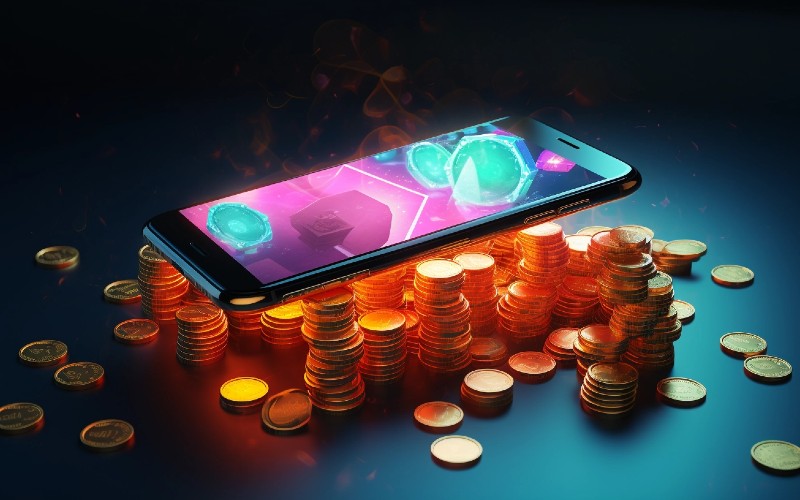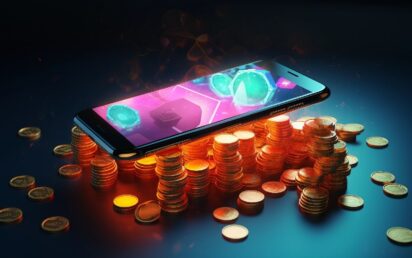Before then, you had to wait patiently for the video game’s release date, get in your car, go to a real store, and stand in queue to buy it. Digital games are readily accessible to buy, download, and play at any time using desktop or mobile applications in today’s technologically evolved society. However, players still have a contemporary worry. How are they going to pay by mobile slots not on Gamstop?
Globally, there are over 3.09 billion gamers that are actively playing. Although a lot of people like playing video games, payments have never been a more difficult problem for game producers. A player’s emotional commitment and devotion to a game might be influenced by how they choose to pay for it. The industry-wide payment drop-off rate is 67.4%, thus developers cannot afford to disregard players’ opinions about their payment processing.
A worldwide audience should always be considered while monetizing games. This entails carrying out in-depth study and selecting a model that is suitable for a global audience. Continue reading to find out more about the benefits and drawbacks of the most widely used video game payment methods as well as how to provide a flawless gaming experience for your gamers.
Five Payment Models for Mobile Games
For game makers, revenue is essential since it guarantees the survival of their team. They may carry on producing new games that provide fans a thrilling, novel experience every time. Payment models, as, for example micropayment, that make sense for your game and make sense inside your interface are how you, as the developer, generate money. You do this by choosing payment models that are convenient for your players.
There are a lot of new methods to pay for video games thanks to technology. To assist you in selecting the best payment model for your platform, we have listed the top five payment methods below.
1. A single transaction
Users who choose the single payment plan can profit from only having to buy video games once and not having to buy anything else in the future. Due of its very simple nature, this concept is appealing to a lot of smaller indie game makers.
2. DLC, or downloadable content
Under a downloadable content (DLC) pricing model, players pay a single fee for the main game and can choose to pay more money at any point to acquire additional features or components. New areas to explore within the game, more levels, unique quests, or new character or equipment cosmetics are some examples of the extras.
The primary benefit of this concept is that it lets you generate recurring income. Additionally, it lets users tailor the gaming experience to suit their own tastes, regardless of whether they only want to play the core game, become more involved in the experience, or take use of all of the material.
When utilising DLC to increase income, developers should always keep an eye on player feedback to make sure the experience lives up to expectations and modify future DLC accordingly.
3. No cost to access (freemium)
Freemium games let users download and enjoy the full game without having to pay anything. For them to obtain things like in-game currencies, weapons, powers, cosmetics, or experience points enhancements, they have to pay real money.
Through ad placements, these games frequently generate income. Many players consider freemium games to be the best of both worlds, and they are willing to put up with a few advertisements in order to play for free. Speaking of which, such content is available to players for certain actions. For example, by barter advertising.
Developers should think about giving players who are on a tight budget the opportunity to obtain comparable extras by letting them accumulate in-game cash, which they can then trade in for virtual products. While they cannot buy the “premium” with money, these players can still progress in the game.
4. Memberships
Both within and outside of the game industry, subscription models operate in the same manner. For a certain amount of time—typically a month—users pay in advance to play games or access premium content. Players will lose access to the game and its benefits if they cease making payments.
Both the developer and the gamer may benefit from these models in a number of ways. They are frequently inexpensive, enabling players to enjoy the full range of services for a minimal monthly fee. Because of this, some subscription games have millions of players, bringing in a sizable sum of money for their creators on a regular basis.
Moreover, subscriptions enable players and creators to create a community around the game, which facilitates user interaction and the exchange of ideas and tactics. Establishing a community for gamers aids in their emotional connection to the game and frequently keeps them playing.
By consistently publishing fresh material, developers may also encourage and maintain users’ interest and frequent repeat visits.
5. Internet fundraising
Through the use of crowdfunding, future players can contribute money to the development of a product that is not yet accessible for purchase or play. Crowdfunding provides advantages for both consumers and developers, much like a subscription model.
Gamers take pride in knowing that they are contributing to the creation of something entertaining and unique, and as founder members, they may even be able to offer comments during the development phase or receive special rewards. Crowdfunding is an appealing alternative for creators since it frees them from having to find the money needed for game development on their own or give up creative freedom to a publisher.
There are some disclaimers. Players that participate in crowdfunding must have faith in the developer to release a completed game. Additionally, the developer must be diligent and dedicated to communicating and providing their users with something they will appreciate.
Six Options for Video Game Payment
After learning about the five main game payment types, it’s time to talk about another part of monetization: the kinds of payments that players may make. Customers who shop online, on mobile devices, PCs, or consoles should have a variety of alternatives. The top six methods for purchasing video games are shown below.
1. Credit cards
To purchase video games online, a player swipes the magnetic strip, inserts the chip, or enters their payment information. Straight from their bank account, the money is sent to the merchant’s account.
Debit cards provide the advantage of instantly depositing player funds into your bank account. Because banks spend a lot of money protecting consumers and businesses from financial loss, they often do not cancel lawful charges without your permission. Debit card transactions are also very secure.
2. Bank cards
Players utilise credit cards to make instantaneous payments, much like they do with debit cards. Even when users take out bank loans, the developer is paid right away and isn’t concerned about repayment from the user.
Credit card issuers provide excellent buyer protection, and users have the ability to challenge charges at any point. Thus, make sure that your payment platform include pay forms and that your payment gateways and technical documentation are reliable. Third-party page diversions never disrupt the buying flow in this way.
3. Transactions with banks
Bank transfers, sometimes referred to as wire transfers, entail transferring money straight from one bank account to another at a separate bank. Providers such as SOFORT, iDEAL, and BLIK often handle requests quickly when the recipient institution confirms the sender’s identity.
4. Electronic wallets
Online wallets allow users to store money, much like conventional wallets do. In the realm of digital wallets, there are several well-known players like PayPal, Amazon Pay, and Google Pay in addition to a large number of regional players like Alipay and QIWI. For consumers who need to make a quick purchase, online wallet transfers are appealing since they are sometimes quicker than wire transfers.
In return for a service charge, an online wallet serves as a go-between for the player and the gaming platform or store. You must choose whether to include service costs in the game’s price structure or pass them on to your players since online wallets have the ability to charge both the publisher and the player.
5. Digital Money
Digital currency is known as cryptocurrencies, or crypto. Cryptocurrency holders save their holdings in a digital wallet on a cloud-based software platform or hard disc. In general, governments regulate cryptocurrency differently than they handle traditional money or coins. Rather, crypto provides the accounting and identity verification via encryption technology.
Due to the novelty of cryptocurrency payments, you should rely on astute partners like Xsolla, which provides cryptocurrency integration with payment processing systems like Crypto.com Pay, making the acceptance of cryptocurrencies worry-free.
6. Use points to make a payment.
Since gamers don’t have to pay actual money to acquire games, using points is the most cost-effective method of doing so. Rather, they make use of loyalty points from a developer’s affiliated companies.
A points model is simple to set up for developers and publishers, and it increases conversions and decreases payment drop-offs. Loyalty point payments frequently seamlessly blend into the game and stimulate the player to make purchases.
Conclusions
As you can see, there are many ways to pay for mobile gambling. Each of the options has its own advantages and disadvantages. Here we are talking about the time of transactions, additional commissions for services and so on.
Choosing one or another option, the player needs to take into account all the nuances. You should also take into account the tips for a positive gaming experience that allow you to get the maximum benefit from the purchase of the game and further use.


